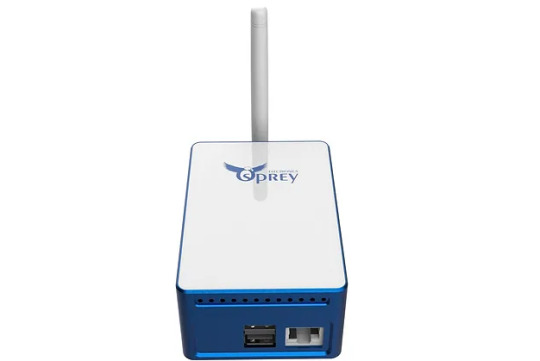#Helium Hotspot
Text
Unveiling the Future: Crypto Hotspot Mining and Helium Hotspot Miners

Delve into the world of crypto hotspot mining with Helium Hotspot Miners. These devices facilitate decentralized wireless network coverage while earning cryptocurrency rewards. Learn about their role in the emerging IoT ecosystem and how they contribute to the blockchain network's infrastructure. Discover the potential of Helium hotspot miners and their impact on decentralized connectivity.
For More:
#crypto hotspot#crypto mining#helium hotspot#helium hotspot miner#hotspot miner helium#lorawan hotspot helium#cryptocurrency mining device
0 notes
Text
HNT | Helium Network: Revolutionizing Wireless Connectivity with Crypto Incentives
New Post has been published on https://www.ultragamerz.com/hnt-helium-network-revolutionizing-wireless-connectivity-with-crypto-incentives/
HNT | Helium Network: Revolutionizing Wireless Connectivity with Crypto Incentives
Helium Network: Revolutionizing Wireless Connectivity with Crypto Incentives
In the ever-evolving realm of cryptocurrency, numerous projects grapple with the elusive bridge between theory and real-world application. However, the Helium Network stands out as a shining example, actively transforming the landscape of wireless connectivity with its innovative approach. This article delves into the Helium Network ecosystem, exploring its cryptocurrencies, functionalities, and potential impact on the future of mobile networks.
The Power of Decentralization:
The Helium Network operates on a decentralized peer-to-peer (P2P) model, leveraging a global network of Helium hotspots hosted by individuals. These hotspots, essentially low-powered wireless routers, provide internet access to devices within their range. By participating in this network, users earn rewards in the form of Helium’s native cryptocurrency, Helium (HNT). This unique incentive structure incentivizes network growth and fosters a collaborative environment.
A Symphony of Cryptocurrencies:
The Helium Network ecosystem revolves around four critical cryptocurrencies:
Helium (HNT): The lifeblood of the network, HNT serves as the primary reward for hotspot owners who contribute to network coverage. Users can also burn HNT to create Data Credits, which power data transfer across the network.
Mobile Helium (MOBILE): This utility token rewards users for sharing their mobile data connection through the Helium Mobile app. MOBILE incentivizes broader network participation and strengthens cellular connectivity.
Internet of Things (IoT) Token (IOT): While not currently tradable, the IOT token represents a future reward mechanism for devices on the Helium Network. It is designed to incentivize the adoption of Internet of Things (IoT) devices within the network and facilitate communication between them.
Data Credits (DCs): Representing units of data transfer within the Helium Network, DCs are burned to facilitate data transmission between devices.
Bridging the Gap: Helium Mobile and 5G Integration:
The Helium Network isn’t just about Wi-Fi. Through its Helium Mobile initiative, the project aims to revolutionize mobile network infrastructure by integrating 5G capabilities with blockchain technology. Users with compatible smartphones can contribute cellular network coverage through the app, earning MOBILE tokens in return. This collaborative approach holds immense potential for expanding and democratizing access to high-speed mobile data.
HNT and MOBILE: Potential Powerhouses in the Decentralized Future?
Helium (HNT) and Mobile Helium (MOBILE) have garnered significant attention within the crypto sphere, and with good reason. Both coins are integral to the functioning of the Helium Network, a revolutionary project actively building a decentralized wireless infrastructure. HNT, the network’s primary token, incentivizes users to host Helium hotspots, expanding network coverage and earning rewards. MOBILE, on the other hand, rewards users for sharing their mobile data connection through the Helium Mobile app, contributing to a more robust cellular network.
The current price action of HNT and MOBILE can be volatile, as is the nature of cryptocurrency markets. However, their long-term potential hinges on the success of the Helium Network itself. As the network gains traction and disrupts the traditional wireless landscape, both HNT and MOBILE could see significant price appreciation. The increasing demand for data, coupled with the growing focus on decentralized solutions, positions these tokens as potential long-term investments. However, it’s crucial to remember that cryptocurrency investments are inherently risky, and thorough research is essential before making any financial decisions.
Current Market Frenzy:
The Helium Network and its associated cryptocurrencies have captured the attention of the crypto community. Notably, both HNT and MOBILE have experienced significant price surges in recent times, reflecting investor confidence in the project’s potential. However, it’s crucial to remember that cryptocurrency markets are inherently volatile, and responsible investment decisions require thorough research.
Beyond the Hype: A Sustainable Ecosystem on Solana:
Helium leverages the power of the Solana blockchain for efficient transaction processing and network scalability. This partnership ensures that the Helium Network can accommodate future growth and maintain a robust infrastructure.
The Road Ahead:
The Helium Network presents a compelling vision for the future of wireless connectivity. By harnessing the power of decentralization and incentivizing user participation with cryptocurrency rewards, Helium fosters a collaborative environment that could reshape the way we access and share data. While the project remains in its growth phase, its real-world applications and innovative approach hold significant promise for the future of mobile networks and the broader blockchain landscape.
Keywords:
Helium Network, cryptocurrency, decentralized network, peer-to-peer (P2P), Helium hotspot, Internet of Things (IoT), Helium (HNT), Mobile Helium (MOBILE), IoT Token (IOT), Data Credits (DC), 5G network, blockchain technology, decentralized wireless network, mobile data sharing, cryptocurrency investment, Solana blockchain, scalable network, future of wireless connectivity, Helium price, MOBILE price, Helium mining, Helium hotspot setup, decentralized internet, Web3 development, disruptive technology
#5g network#blockchain technology#Cryptocurrency#Cryptocurrency Investment#Data Credits (DC)#decentralized internet#decentralized network#decentralized wireless network#disruptive technology#future of wireless connectivity#Helium (HNT)#Helium hotspot#Helium hotspot setup#Helium mining#helium network#Helium price#Internet of Things (IoT)#IoT Token (IOT)#mobile data sharing#Mobile Helium (MOBILE)#MOBILE price#peer-to-peer (P2P)#scalable network#Solana blockchain#Web3 development#cryptocurrency#Gaming News#Technology
0 notes
Text
Unleashing the Potential: Mining Helium Crypto with IoT Devices
In the rapidly evolving landscape of cryptocurrency, a unique opportunity has emerged for individuals to not only participate in the blockchain revolution but also earn rewards through mining. One exciting avenue gaining traction is the mining of Helium (HNT) cryptocurrency using Internet of Things (IoT) devices. Let’s delve into this innovative world of crypto mining with examples of popular…

View On WordPress
#bitcoin mining#bobcat miner#crypto#crypto miner#helium#helium hotspot#HNT#iot#mining helium#nebra#POC
0 notes
Video
youtube
How The iHub Affiliate Program Is Impacting The World
The one affiliate program that you can earn from without having to pay a penny to become a member and start promoting
Create your free affiliate account and share with others. Presentation shares the 4 different verticals that iHub Global is involved with that are free for anyone to share with other people.
#youtube#ihub affiliate program#affiliate marketing#how the ihub affiliate prorgam is impacting the world#how to become a free affiliate#ihub travel#ihub erc#ihub loop#helium hotspot#ihub helium hotspot#how to be come an ihub affiliate#affiliate marketing 101#entrepreneur#ideas for entrepreneurs#worksmarter4u#silver and gold solutions
1 note
·
View note
Text
What You Need to Know About the New Helium 5G

The Helium network is one of the most exciting projects operating in the crypto space today. Using decentralized WiFi technology, they’ve grown their peer-powered LoRaWAN® network all over the globe in the span of just a few years—and their success doesn’t end there. Recently, Helium rolled out their most anticipated endeavor yet: Helium 5G. But how did they get here and what does it have to do with everyday users like you?
Read on to learn more about the next leg of this revolutionary wireless network.
Helium: The Journey to 5G
Helium 5G is the next big thing in The People’s Network. It follows the success of Helium’s first brainchild, the peer-to-peer LoRaWAN® network powered by privately owned, user-deployed Helium hotspots. In just three years, it has become the world’s fastest-growing wireless networks. Its community has deployed almost one million Helium hotspots worldwide and the network continues to operate today, providing affordable network access to thousands of people and businesses everywhere.
This LoRaWAN network was Helium’s sole operation for three years. Now they’re moving towards the next major network: the world’s first community-powered 5G mobile network. Like the LoRaWAN network, it’s hosted on the Helium blockchain and builds coverage via user-deployed Helium hotspots. The Helium 5G network currently operates only in the US but is expected to expand internationally in the future.
1 note
·
View note
Text
#helium#helium token#helium network#helium 5g#helium hnt crypto#helium hnt mining#helium hotspot#helium miner earnings#helium crypto#best helium miner#helium hnt 2022#helium hnt price prediction#helium hotspot antenna#helium mining profitability#helium hotspot profitability#helium mining 2022#helium mobile token#helium hnt scam#helium hnt news#helium hnt mining profitability
0 notes
Text

Need the right hardware to create an IoT solution? offers the coverage you need & earn over time.
Single RAK Hotspot Miner V2 cost you $259
Indoor Hotspot setup, inc 5dbi antenna + cables, $349
Outdoor Hotspot setup with enclosure kit, $429
Check out our store and grab them at a discount today!
Visit - https://store.rakwireless.com/collections/helium
5 notes
·
View notes
Text
Can Helium (HNT) make money from Wireless Hotspots?
Helium (HNT) is a cryptocurrency associated with a decentralized network of wireless hotspots.
A hotspot is a device that connects other devices to the internet or the blockchain through wireless signals. For example, a Bluetooth. Many of us have wireless hotspots in our homes or workplaces.
Predictably, hotspots are a critical component of the Internet of Things (IoT). The IoT comprises…

View On WordPress
#Can Helium (HNT) make money from Wireless Hotspots?#Helium (HNT#The Helium (HNT) Protocols#The Helium Ecosystem#The Helium Network (HNT)#What Value does Helium (HNT) offer?
0 notes
Text
Upgrade Your Helium Miner to an 8dBi Antenna
If you’re a Helium miner, you may be looking for ways to optimize your setup and increase your earnings. One option to consider is upgrading to an 8dBi antenna. In this post, we’ll explain what an 8dBi antenna is and how it can benefit your Helium mining operation.
What is an 8dBi antenna?
An antenna is a device that transmits or receives radio waves, allowing communication between devices. The…

View On WordPress
0 notes
Link
Now the world’s largest decentralized LoRaWAN® network, Helium serves as an accessible and low-cost way to connect things across the Internet and offers an alternative option to traditional wireless networks.
0 notes
Text
Osprey Hotspot G1 (US, Europe, China)

Understand how Helium's network uses LoRaWAN technology for IoT connectivity and rewards in cryptocurrency, versus traditional Ethereum mining devices focused on blockchain transactions. Learn about their unique functions, benefits, and how they contribute to the expanding digital landscape. Osprey Hotspot G1 is for PoC Helium network, mining HNT. It works with the Helium LongFi architecture, which integrates the leading wireless LoRaWAN protocol with the Helium Blockchain technology. All Osprey Hotspot G1 are compatible with LoRaWAN.
LongFi connects the LoRaWAN enabled IoT devices to the network, allowing any LoRaWAN device to send and receive data for the Internet of Things. LongFi provides roaming capabilities and micropayment transactions.
For More:
#crypto hotspot#crypto mining#helium hotspot#helium hotspot miner#hotspot miner helium#lorawan hotspot helium#cryptocurrency mining device#ethereum mining device
0 notes
Text



NASA’s Webb maps weather on planet 280 light-years away
An international team of researchers has successfully used NASA’s James Webb Space Telescope to map the weather on the hot gas-giant exoplanet WASP-43 b.
Precise brightness measurements over a broad spectrum of mid-infrared light, combined with 3D climate models and previous observations from other telescopes, suggest the presence of thick, high clouds covering the nightside, clear skies on the dayside, and equatorial winds upwards of 5,000 miles per hour mixing atmospheric gases around the planet.
The investigation is just the latest demonstration of the exoplanet science now possible with Webb’s extraordinary ability to measure temperature variations and detect atmospheric gases trillions of miles away.
Tidally Locked “Hot Jupiter”
WASP-43 b is a “hot Jupiter” type of exoplanet: similar in size to Jupiter, made primarily of hydrogen and helium, and much hotter than any of the giant planets in our own solar system. Although its star is smaller and cooler than the Sun, WASP-43 b orbits at a distance of just 1.3 million miles – less than 1/25th the distance between Mercury and the Sun.
With such a tight orbit, the planet is tidally locked, with one side continuously illuminated and the other in permanent darkness. Although the nightside never receives any direct radiation from the star, strong eastward winds transport heat around from the dayside.
Since its discovery in 2011, WASP-43 b has been observed with numerous telescopes, including NASA’s Hubble and now-retired Spitzer space telescopes.
“With Hubble, we could clearly see that there is water vapor on the dayside. Both Hubble and Spitzer suggested there might be clouds on the nightside,” explained Taylor Bell, researcher from the Bay Area Environmental Research Institute and lead author of a study published today in Nature Astronomy. “But we needed more precise measurements from Webb to really begin mapping the temperature, cloud cover, winds, and more detailed atmospheric composition all the way around the planet.”
Mapping Temperature and Inferring Weather
Although WASP-43 b is too small, dim, and close to its star for a telescope to see directly, its short orbital period of just 19.5 hours makes it ideal for phase curve spectroscopy, a technique that involves measuring tiny changes in brightness of the star-planet system as the planet orbits the star.
Since the amount of mid-infrared light given off by an object depends largely on how hot it is, the brightness data captured by Webb can then be used to calculate the planet’s temperature.
The team used Webb’s MIRI (Mid-Infrared Instrument) to measure light from the WASP-43 system every 10 seconds for more than 24 hours. “By observing over an entire orbit, we were able to calculate the temperature of different sides of the planet as they rotate into view,” explained Bell. “From that, we could construct a rough map of temperature across the planet.”
The measurements show that the dayside has an average temperature of nearly 2,300 degrees Fahrenheit (1,250 degrees Celsius) – hot enough to forge iron. Meanwhile, the nightside is significantly cooler at 1,100 degrees Fahrenheit (600 degrees Celsius). The data also helps locate the hottest spot on the planet (the “hotspot”), which is shifted slightly eastward from the point that receives the most stellar radiation, where the star is highest in the planet’s sky. This shift occurs because of supersonic winds, which move heated air eastward.
“The fact that we can map temperature in this way is a real testament to Webb’s sensitivity and stability,” said Michael Roman, a co-author from the University of Leicester in the U.K.
To interpret the map, the team used complex 3D atmospheric models like those used to understand weather and climate on Earth. The analysis shows that the nightside is probably covered in a thick, high layer of clouds that prevent some of the infrared light from escaping to space. As a result, the nightside – while very hot – looks dimmer and cooler than it would if there were no clouds.
Missing Methane and High Winds
The broad spectrum of mid-infrared light captured by Webb also made it possible to measure the amount of water vapor (H2O) and methane (CH4) around the planet. “Webb has given us an opportunity to figure out exactly which molecules we’re seeing and put some limits on the abundances,” said Joanna Barstow, a co-author from the Open University in the U.K.
The spectra show clear signs of water vapor on the nightside as well as the dayside of the planet, providing additional information about how thick the clouds are and how high they extend in the atmosphere.
Surprisingly, the data also shows a distinct lack of methane anywhere in the atmosphere. Although the dayside is too hot for methane to exist (most of the carbon should be in the form of carbon monoxide), methane should be stable and detectable on the cooler nightside.
“The fact that we don't see methane tells us that WASP-43b must have wind speeds reaching something like 5,000 miles per hour,” explained Barstow. “If winds move gas around from the dayside to the nightside and back again fast enough, there isn’t enough time for the expected chemical reactions to produce detectable amounts of methane on the nightside.”
The team thinks that because of this wind-driven mixing, the atmospheric chemistry is the same all the way around the planet, which wasn’t apparent from past work with Hubble and Spitzer.
The MIRI observation of WASP-43 b was conducted as part of the Webb Early Release Science programs, which are providing researchers with a vast set of robust, open-access data for studying a wide array of cosmic phenomena.The James Webb Space Telescope is the world's premier space science observatory. Webb is solving mysteries in our solar system, looking beyond to distant worlds around other stars, and probing the mysterious structures and origins of our universe and our place in it. Webb is an international program led by NASA with its partners, ESA (European Space Agency) and the Canadian Space Agency.
TOP IMAGE....This artist’s concept shows what the hot gas-giant exoplanet WASP-43 b could look like. WASP-43 b is a Jupiter-sized planet roughly 280 light-years away, in the constellation Sextans. The planet orbits its star at a distance of about 1.3 million miles, completing one circuit in about 19.5 hours. Because it is so close to its star, WASP-43 b is probably tidally locked: Its rotation rate and orbital period are the same, such that one side faces the star at all times. Credits: NASA, ESA, CSA, Ralf Crawford (STScI)
CENTRE IMAGE....This phase curve, captured by the MIRI low resolution spectrometer on NASA’s James Webb Space Telescope, shows the change in brightness of the WASP-43 system over time as the planet orbits its star. The system appears brightest when the hot dayside of the planet is facing the telescope, just before and after it passes behind the star. The system grows dimmer as the planet continues its orbits and the nightside rotates into view. It brightens again after passing in front of the star as the dayside rotates back into view. WASP-43 b is a hot Jupiter roughly 280 light-years away, in the constellation Sextans. Credits: Science: Taylor J. Bell (BAERI); Joanna Barstow (Open University); Michael Roman (University of Leicester) Graphic Design: NASA, ESA, CSA, Ralf Crawford (STScI)
BOTTOM IMAGE....This set of maps shows the temperature of the visible side of the hot gas-giant exoplanet WASP-43 b, as it orbits its star. The dayside of the planet is visible just before and after it passes behind the star. The temperatures were calculated based on more than 8,000 brightness measurements of 5- to 12-micron mid-infrared light detected from the star-planet system by MIRI (the Mid-Infrared Instrument) on NASA’s James Webb Space Telescope. In general, the hotter an object is, the more mid-infrared light it gives off. Credits: Science: Taylor J. Bell (BAERI); Joanna Barstow (Open University); Michael Roman (University of Leicester) Graphic Design: NASA, ESA, CSA, Ralf Crawford (STScI)
3 notes
·
View notes
Text
Helium, a blockchain scam that was also IoT
https://www.coindesk.com/consensus-magazine/2022/12/05/amir-haleem-most-influential-2022/
Amir Haleem is the CEO and co-founder of Helium Systems, a San Francisco-based wireless network and blockchain company developing a peer-to-peer wireless network. The company is famed for its proprietary “hotspots,” which are wireless devices powered by the Helium Blockchain.
Users mine Helium’s native token, HNT, as an incentive for expanding and strengthening wireless coverage for devices.
Haleem co-founded Helium Systems in June 2013 with Shawn Fanning and Sean Carey, and he also serves as chairman. According to Haleem, Helium Systems resulted from many conversations with Napster founder Fanning after the two met in 2005. They wanted to recreate Napster’s peer-to-peer model with wireless networks but without the pesky legal problems of copyright law
Hosts receive HNT whenever their hotspots provide coverage and transfer device data. In February 2022, the Helium cryptocurrency had a market cap of over $2.5 billion and close to 600,000 Helium Systems hotspots.
Stretching reality
One of the broad themes in crypto this year has been insufficient due diligence. Three Arrows Capital and, most recently, FTX, both fell because of misplaced trust and insufficient hard questions being asked.
The Helium peer-to-peer wireless network protocol, which promised users payouts if they ran nodes, claimed its technology was used by the likes of mobility companies Lime and Salesforce. Neither of these companies are Helium clients.
A partnership with Dish Network also was not true. Helium claimed its hotspots would be incorporated into Dish’s growing 5G network to help provide coverage where it wasn’t yet economical to build a full tower. But Dish denied it had any involvement.
Does anyone use the network?
Like many other cryptocurrency projects, Helium’s network has been rife with scams. It is unclear how much of the network’s activity is legitimate, and how much involves people setting up devices to exchange junk data to and from their Helium hotspot and earn tokens in the process.
Earlier this year Fortune reported that the value of legitimate data transfers on the network appeared to be in the thousands of dollars, not the millions that Helium said hotspot owners were collecting.With the bear market, the Helium HNT token’s price has plummeted. As CoinDesk reported, the largest owners of Helium hotspots are only earning a few dollars a day despite spending thousands on equipment....
28 notes
·
View notes
Text


my hotspot continues to earn some Helium cryptocurrency. it did go through a dry spell and I wasn’t sure how to fix the issue or if the problem was something external. I cycled the power on my hotspot and it’s back to functioning properly. currently, 1 helium crypto is worth about $5.00
I researched the process for converting the helium crypto to US dollars and it seems fairly complicated. For now, I will just wait until my helium balance builds before going through with converting. Also, there is another tax schedule to fill out after transacting some cryptocurrency.
11 notes
·
View notes
Text
2 notes
·
View notes
Text
#solana#helium#helium solana#blockchain#helium blockchain#solana helium#solana price#helium 5g#helium solana migration#helium mining#helium miner#helium network#solana news#solana crypto#helium crypto#helium hnt#solana saga#solana phone#solana hack#helium hotspot miner#helium hack#helium hacks#solana price prediction#solana coin#helium lorawan#voskcoin helium#helium news#helium ditching for solana#helium token#helium moving to solana
1 note
·
View note